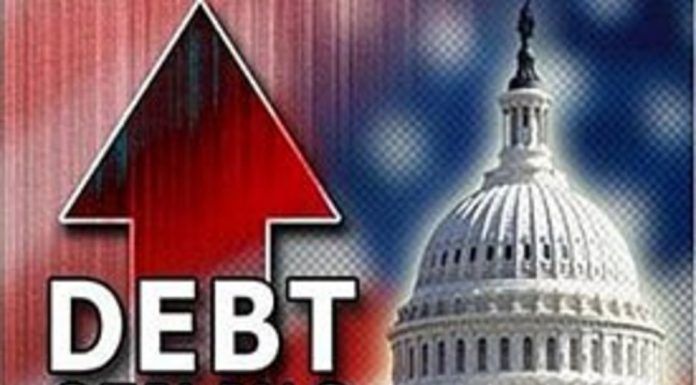(Romina Boccia, Cato Institute) Within mere days of the X‑day deadline for when the federal government would run out of wiggle room to keep borrowing under the statutory debt limit, the President’s and House Speaker McCarthy’s negotiators released the Fiscal Responsibility Act (H.R.3746). Here’s what you need to know to judge its impact on addressing the U.S. debt problem:
Waives the Debt Limit
The bill suspends the debt limit until January 1, 2025. A suspension acts like a waiver. The bill temporarily eliminates the debt limit, allowing for unlimited borrowing for about a year and a half.
It’s curious that Republicans agreed to waive the debt limit leading up to the 2024 election, when President Biden’s executive decision to cancel student loans increased the fiscal year (FY)2023 deficit by more than $400 billion, in another pre‐election move. It’s less curious when considering that Republicans don’t like voting for explicit debt limit increases because it’s harder yet to be transparent about inflating the debt by another $3–4 trillion between now and January 2025. It’s politically easier to keep the effect on the debt open‐ended and uncertain. Even if doing so means leaving open the possibility for more executive debt increases as well as resorting to more deficit spending should there be some emergency in the next few months, like a recession.
Phantom Savings
In exchange, the bill establishes statutory caps on discretionary funding of up to $1.590 trillion for FY2024 ($886 billion for defense and $704 billion for nondefense) and $1.606 trillion for FY2025 ($895 billion for defense and $711 billion for nondefense). The bill also includes nonbinding spending limits for four more years. You might as well view those as suggestions.
CBO takes the spending limits at face value and scores the bill as saving $1.5 trillion over 10 years. Unfortunately, that math is misleading. In addition to giving lawmakers full credit for six years of spending limits, CBO does not consider side deals that will undermine even the modest savings put forth in this bill. According to off‐the‐record sources, after repurposing funds and various other budgetary gimmicks agreed to by negotiators outside the legal text, nondefense discretionary savings in FY2024 will amount to no more than $1 billion. CBO assumes $64 billion in savings that year, which is also the basis for future savings estimates. With these backroom spending increases in mind, the CBO scores mostly phantom savings that are unlikely to be realized.
Work Requirements Change to Increase Spending
The bill also modifies work requirements for SNAP (Supplemental Nutrition Assistance Program) and TANF (Temporary Assistance for Needy Families) in such a way that spending will increase, because more individuals will become eligible for assistance. On the savings side, the age limit below which able‐bodied adults without dependent children are required to perform at least 20 hours of work each week would slowly ratchets up from 50 to 54. On the spending side, more people would be exempt from work requirements, including homeless individuals, veterans, and people ages 18 to 24 who were in foster care when they turned 18.
Fails to Address the Debt Crisis
Congress entered these debt limit negotiations with publicly held debt on the cusp of exceeding the gross domestic product of the country—the amount of all goods and services produced this year—and with debt on track to exceed WWII record‐levels over the next five years. To seriously slow the growth in the debt, Congress needed to save at least $8 trillion over 10 years, or 10 percent of total projected spending. Even assuming the phantom savings in the debt limit deal at face value, the Fiscal Responsibility Act falls significantly short of this goal.



